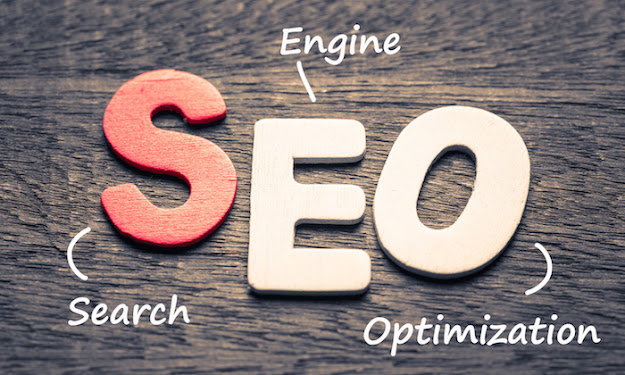SEO requires detailed technical care
Care and attention to detail generally make sense - not
just in terms of SEO. But especially when it comes to technical SEO,
extreme care on all of them - eventually many, technical details are extremely
important. Even very small mistakes can have catastrophic consequences for your
visibility in Google - and if you forget to implement the latest standards, you
will miss out on the extra boost it can provide.
The challenge is so "just" that today there are
really many technical SEO conditions. You probably know some of them - but
are you sure you know them all? Do you know what the latest standards are
and to what extent they must be met? In this post, we are going to take a look
at some of the technical SEO requirements that you should ask yourself and your
developers. If you are in doubt about any of it or want help with this -
a little difficult part of SEO, then we are of course very happy to help.
The first step is proper indexability
Whatever else you do, the first and most important thing
is that Google can crawl and index your website correctly. Because if they
can not find your pages and read the content, then there is nothing to optimize
on. The first step - which far too many forget - is to establish a correct
picture of your website's indexability and actual indexing.
Do you have too few - or too many, pages indexed in
relation to how many you have published and want indexed? Both too many
and too few are signs that you have problems that should be investigated
further. Unfortunately, many people are not aware of the many technical
factors that can completely or partially prevent or limit Google's ability to
read all of your pages. Or vice versa, confuse them with a lot of URL variations
that do not actually lead to unique content.
In addition to obvious restrictions such as
password-protected pages and pages that (intentionally or by mistake) are
excluded with Robots.txt or META robots, there are also a number of other
things that can cause problems. Some of the most common are:
JavaScript
JavaScript does not have to be an SEO problem - but it is just very
often. This is due to the way it is often implemented. This applies
both if your entire website is based on JavaScript frameworks such as Angular
or React, or if it is just individual text and link elements on your pages that
are JavaScript dependent.
.
Technical Duplicate
Content
If Google can access multiple URLs that point to the same content -
e.g. multiple domain variations (with and without www or http and HTTP),
products that fall into multiple categories, filtering and sorting, then it
can cause serious indexing issues.
Incorrect
implementation of CANONICAL tags
We often experience that CANONICAL tags are incorrectly implemented on
websites. And it almost always causes serious indexing issues.
Navigation problems
Many websites suffer from not being able to click through to all pages, but
e.g. have to fill out forms or search to find them all - and Google does
not. Many people mistakenly believe that it can be solved with XML
sitemaps. But even though it may contribute to Google actually finding all
pages, it does not mean that it will be indexed - and even less that they will
actually rank on anything. It needs internal links
to all pages! The above are just a few examples of the most common causes of
indexing problems. In practice, there are many more. Identifying all the
ones you may have requires in-depth knowledge of how Google works. It's a
bit like looking for not just one needle in a haystack - but
an unknown number of needles in an unknown number of haystacks!
Missing
or incorrect Schema data
I have written a lot about Schema data. And for good
reason. Properly implemented Schema data can greatly help improve your
visibility in Google. But there are a number of major challenges with Schema
data, which means that the vast majority of websites are far from as well
Schema-optimized as they could be. The first challenge is to figure out which
Schema data should be used. In this connection, few people are aware that
Schema is a very "living" standard. The object types you
implemented just a few years ago are not necessarily still the right
ones. The standard is constantly expanding, new object types are being added
and this offers new - and usually better, opportunities. But there are also
ongoing constraints. One of the most recent major changes was when Google
in the autumn chose to introduce a number of strong restrictions on Schema
review/ratings. It pays to be extremely detail-oriented in relation to
Schema. And these are the few, unfortunately.
Mobile
optimization is not just a responsive design
Fortunately, most people today make responsive websites -
web designs that automatically adapt to different screen sizes. So far so
good. Unfortunately, that is far from enough today. You need to go
into much more detail if you want the best rating by Google. The first
serious weakness many websites have is in terms of design. That your web
site is responsive is not enough - if e.g. navigation elements and buttons
are too small, or pop-up messages dominate the entire screen, so it's hard on
Google's rating of your website. And even a perfectly responsive design is
not quite enough today - you should also implement AMP. At least on all
the page types that are well suited for it. And just like with responsive
design, AMP is not just AMP. It can be done in many ways and again the
devil is in the detail.
The
speed can always get better
Both Google and your customers love a fast
website. It provides better rankings and higher conversion rates. In
short, it gives many more customers! Nevertheless, we, unfortunately, find that
most websites have far too little focus on just speed. And yes, I know
this is a very complex area and it can be really costly to increase the speed
of your website just a little bit. But it is nonetheless really
important. Speed optimization is a good example that it is the sum of
all the small details that make the outcome. There is (unfortunately) no
simple speed button you can just turn on. As a rule, it is the combination
of a lot of things - image compression, ser setup, coding, caching, etc. that
makes the outcome.
Website
optimization in multiple languages
If your website is available in several languages, there
are a number of important details that you should get in place to get the best
possible visibility in all your markets. First and foremost, good
architecture is important. Both sub-directories, sub-domains, or country
domains can be used, but it is extremely important that you are very, very
careful with the setup. Unfortunately, we often find that websites fail at
this point. Another big problem we experience is when websites try to identify
where the users are coming from, and then "force" them to the
"right" version. In addition to the problems it can cause for
users (eg a Dane living in the UK), it can also very easily cause serious
problems in the search engines. It is also the fewest websites that take
advantage of the huge advantage of correctly implementing Hreflang
tags. Even the websites that use hreflang often do not do it completely
correctly. If there are errors in the code, it does not work at all - and
if there are deficiencies or weaknesses, then the effect is much
smaller. So also at this point, it is important to pay close attention to
the small details.
Need
help with technical SEO?
Whether you have a small or very large website, and no
matter how skilled your developers are, it can be a good idea to get some help
with the SEO services in Karachi technical details. Then you can be sure that you are
completely up-to-date with the requirements set by Google.
![]()



Comments
Post a Comment